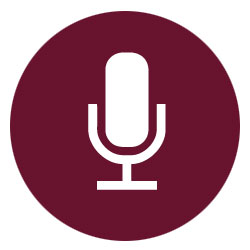Ulnar Neuropathy or Handlebar Palsy
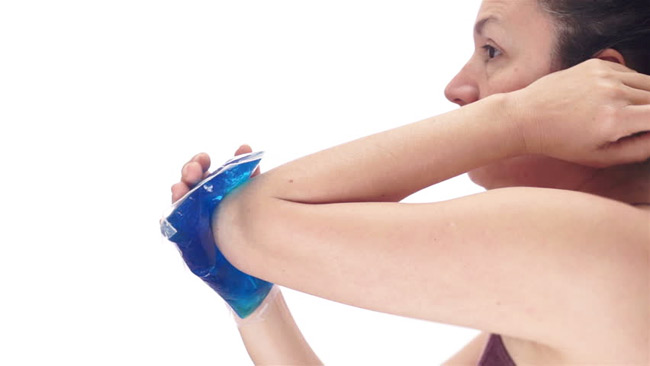
Ulnar neuropathy is an inflammation of the ulnar
nerve, a major nerve that runs down into your hand. It supplies
movement and sensation to your arm and hand. Ulnar neuropathy causes
numbness, tingling, or pain into the arm and hand on the side of the
little finger. Bicyclists call this condition "handlebar palsy".
Bicyclists are especially prone to this condition because of the repeated shocks and bouncing that can occur while holding the handlebars when riding. Other activities that involve stress on the hands and wrists may also irritate the ulnar nerve and cause ulnar neuropathy.
Cause and Occurrence
The ulnar nerve may get inflamed in several areas as it travels from your neck to your hand. The ulnar nerve is commonly inflamed during bicycling from repeated shocks or bouncing while your hand is holding onto the handlebar. The nerve may be stretched when held in the lower position of a drop handlebar. Other activities that involve repetitive movements of the wrist may cause ulnar neuropathy
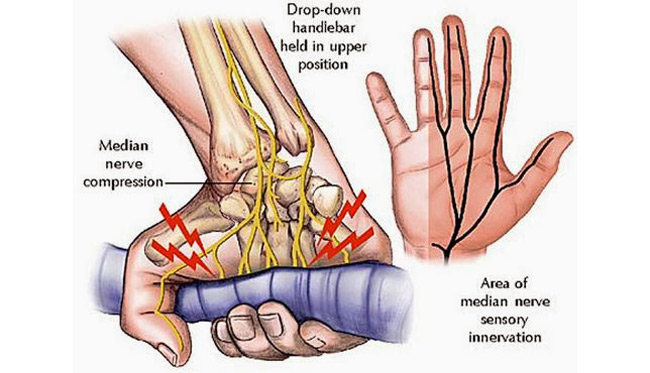
Symptoms
Basically, symptoms of handlebar palsy include ;
- Tingling
- Numbness, or
- Pain on the outside or middle of the forearm; this sensation of discomfort may run all the way to the little finger.
It's important to note, too, that during early stages of the injury symptoms might be limited to tingling (the familiar "pins-and-needles" sensation) while riding with drop handlebars; this distress should disappear if one removes the hands from the lower position on the bars. If ignored, however, the tingling can rapidly progress to numbness and intense pain.
In fact, the pain can be sufficiently intense to prevent cycling altogether, except for pedalling a stationary bicycle without placing the hands on the handlebars
Treatment
Treatment for this condition may involve
anti-inflammatory medications, wrist splints, or
therapeutic
exercises. Wrist splints may help to reduce the discomfort. When you
are bicycling, it might help to wear padded gloves. Try adjusting the position
of your hands on the handlebar, such as by changing your grip from the top to
the sides of the handlebar. In case of need the doctor may prescribe
anti-inflammatory medications or B vitamins.
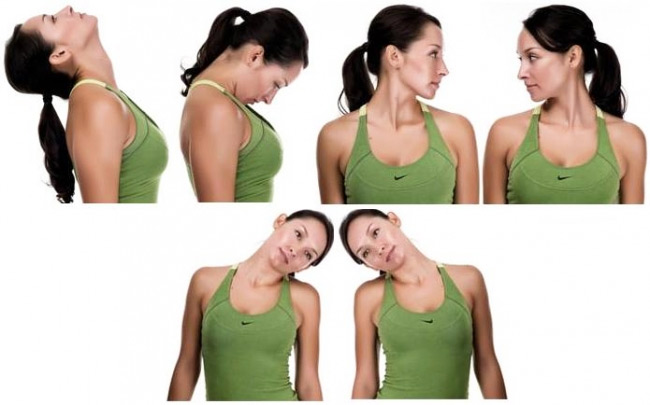
-
Neck Range of Motion Exercises
-
Neck Rotation: Sit in a chair, keeping
your neck, shoulders, and trunk straight. First, turn your head
slowly to the right. Move it gently to the point of pain. Move it
back to the forward position. Relax. Then move it to the left.
Repeat 10 times.
-
Neck Side Bend:
Tilt your head so that your right ear moves toward your right
shoulder. Move it to the point of pain. Then tilt your head so your
left ear moves toward your left shoulder. Make sure you do not rotate
your head while tilting or raise your shoulder toward your head.
Repeat this exercise 10 times in each direction.
- Neck Flexion: Bend your head forward, reaching your chin toward your chest. Hold for 5 seconds. Repeat 10 times.
- Neck Extension: Bring your head back so that your chin is pointing toward the ceiling. Repeat 10 times.
-
Neck Rotation: Sit in a chair, keeping
your neck, shoulders, and trunk straight. First, turn your head
slowly to the right. Move it gently to the point of pain. Move it
back to the forward position. Relax. Then move it to the left.
Repeat 10 times.
- Scapular Range of Motion: Stand and shrug your shoulders up and hold for 5 seconds. Then squeeze your shoulder blades back and together and hold 5 seconds. Next, pull your shoulder blades downward as if putting them in your back pocket. Relax. Repeat this sequence 10 times.
-
Elbow Range of Motion:
Gently bring your palm up toward your shoulder and bend your elbow as
far as you can. Then straighten your elbow as far as you can 10 times.
Do 3 sets of 10.
Wrist Range of Motion: Bend your wrist forward and backward as far as you can. Do 3 sets of 10.
Straight Finger Flexion: Make a right angle with your knuckles and keep your fingers straight. Hold this position for 10 seconds. Repeat 5 times. -
Finger Squeeze:
Practice squeezing items between each of the fingers on your injured
hand. You can use paper, pens, and sponges. Hold for 10 seconds. Repeat
5 times for each finger.
- Grip Strengthening: Squeeze a rubber ball and hold for 5 seconds. Do 3 sets of 10.
Courtesy: McKesson Health Solutions LLC
Prevention
Check out the following tips to avoid this painful problem:
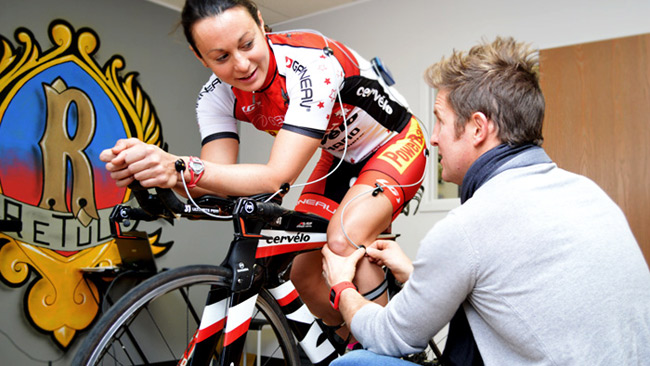
- Make sure your bike fits. When purchasing a bike, see that you are properly measured. Serious biking enthusiasts should consider consulting a professional who can advise on appropriate fitting techniques.
- Padding is key. Padded gloves and handlebars cut back on stress and possible injuries.
- Sit Right. Sitting in a more upright position puts less weight and pressure on hands and wrists.
- Rest Up. Rest periods while biking long distances and between bike trips are recommended. Changing hand position on the handlebars frequently when biking can also help reduce the risk of injury.
- See a doctor with any injuries. PM&R physicians can recommend the right balance of exercise, padding, and bracing to help avoid chronic injuries.
